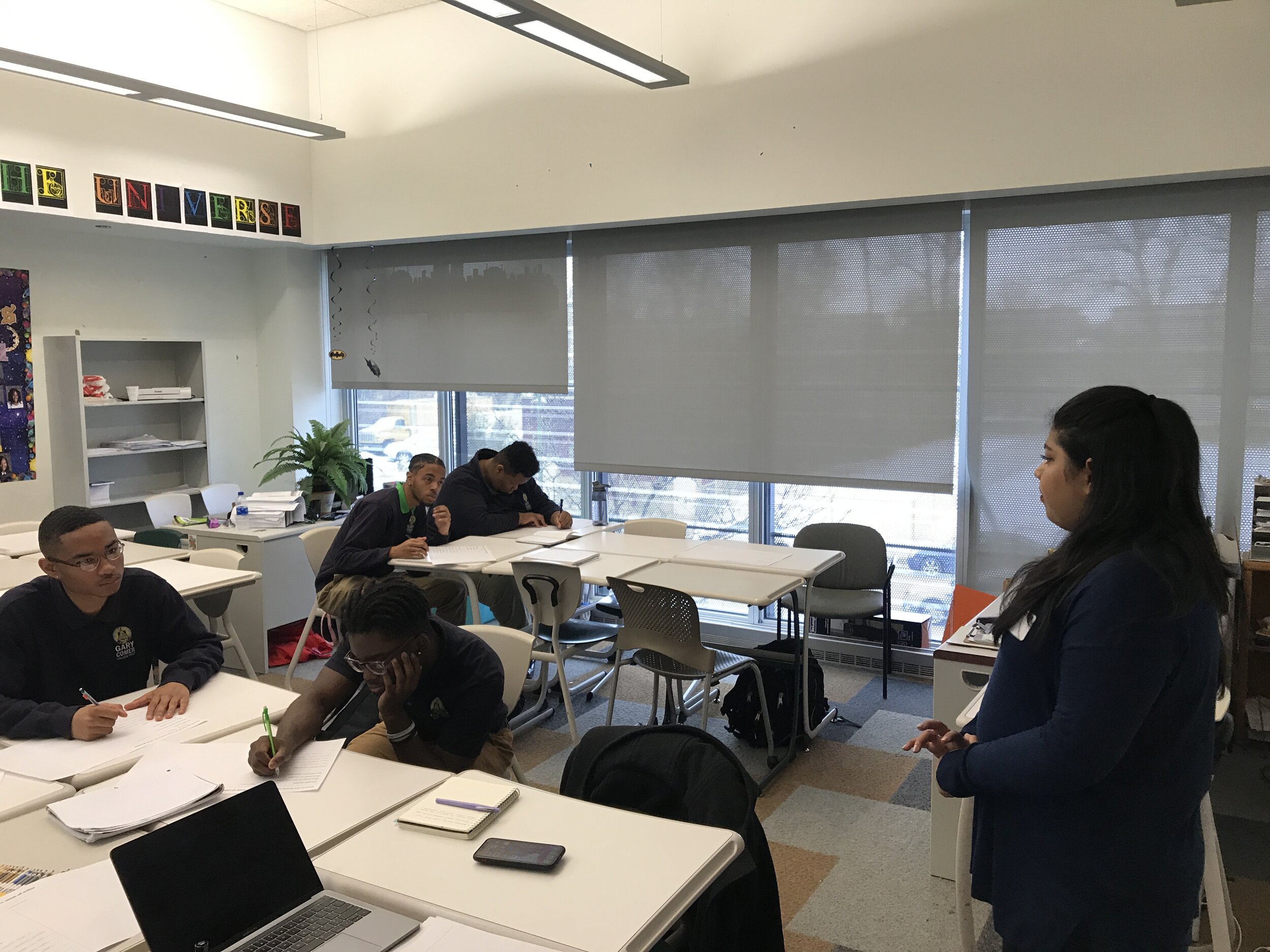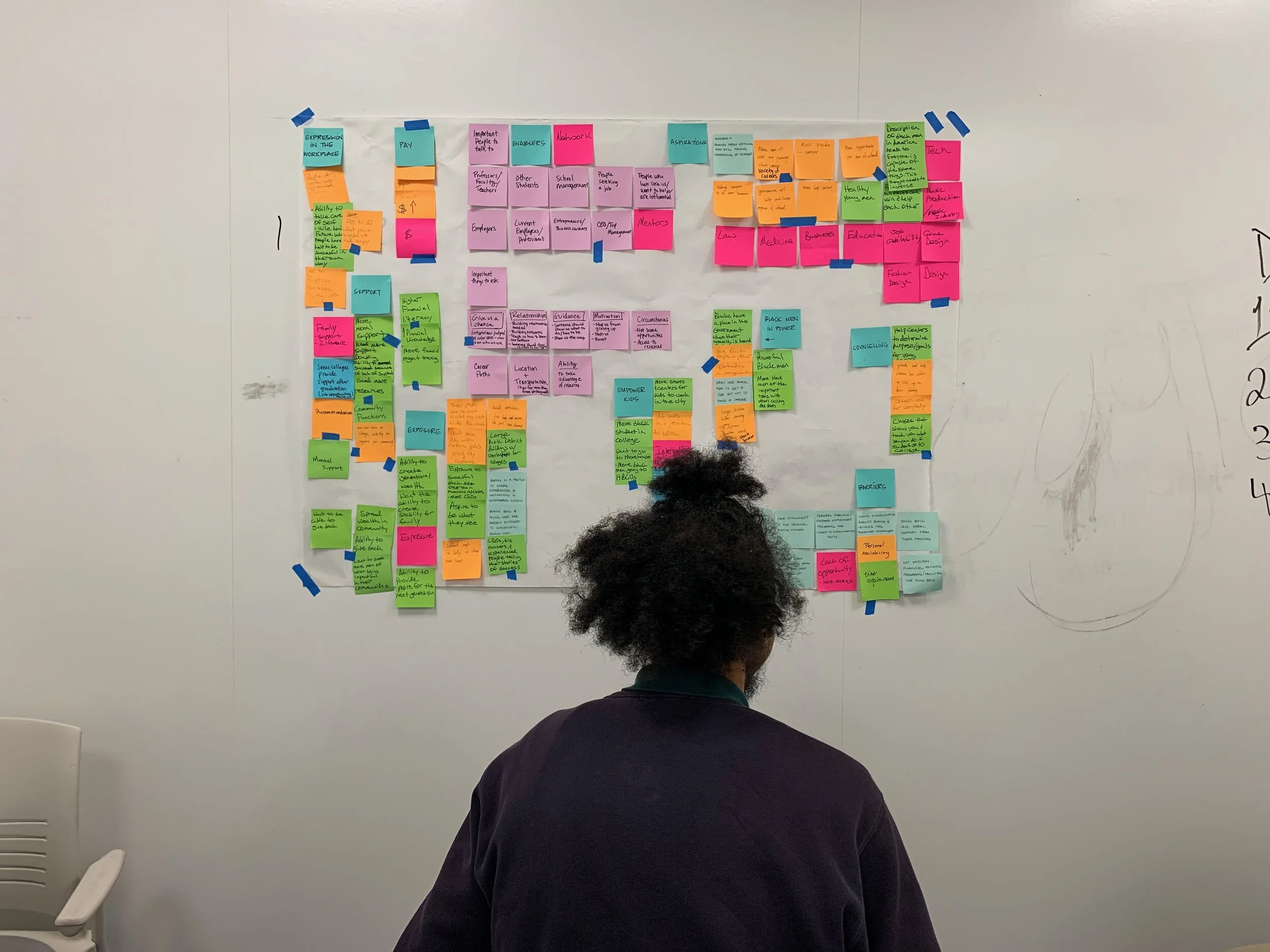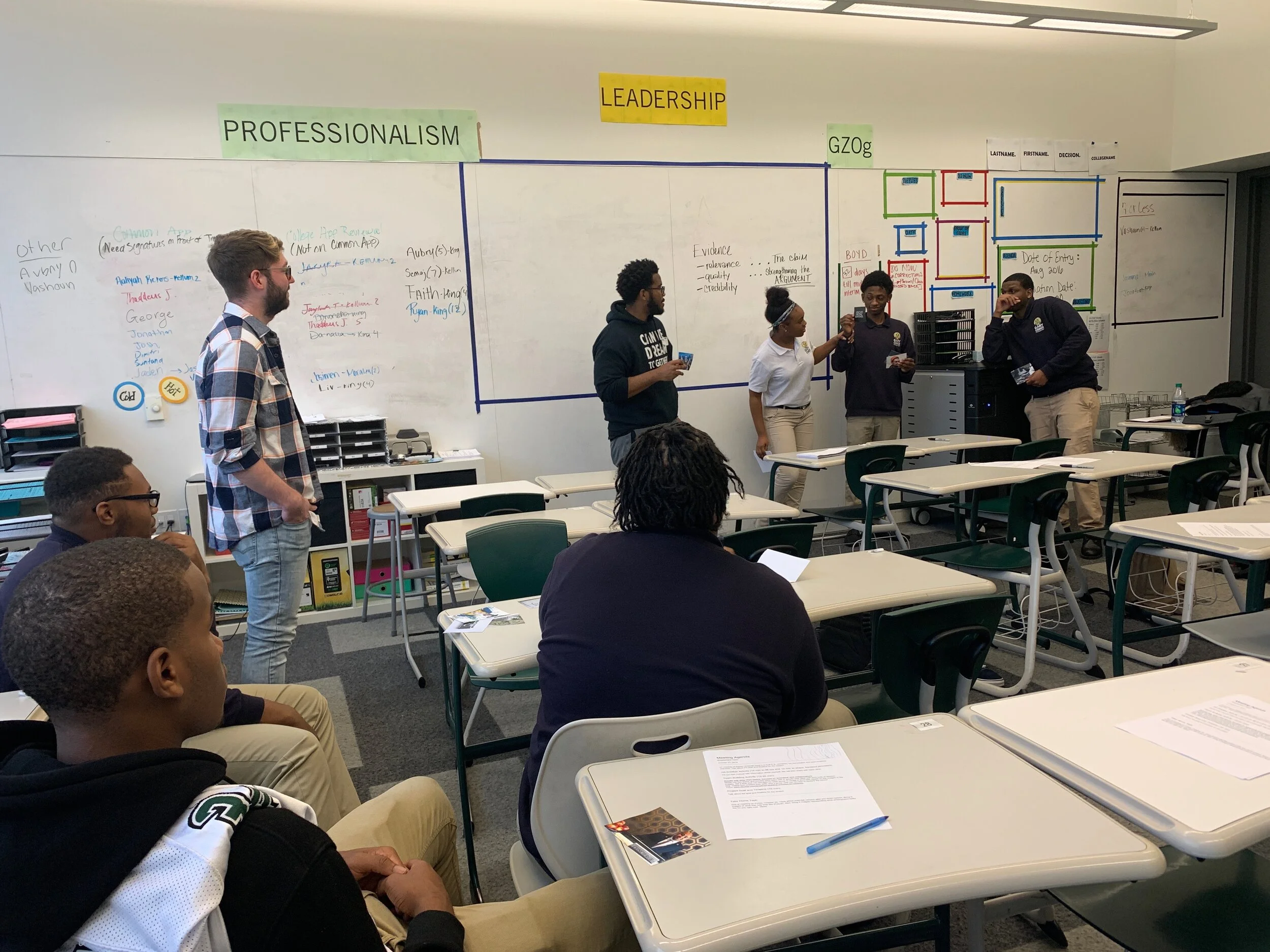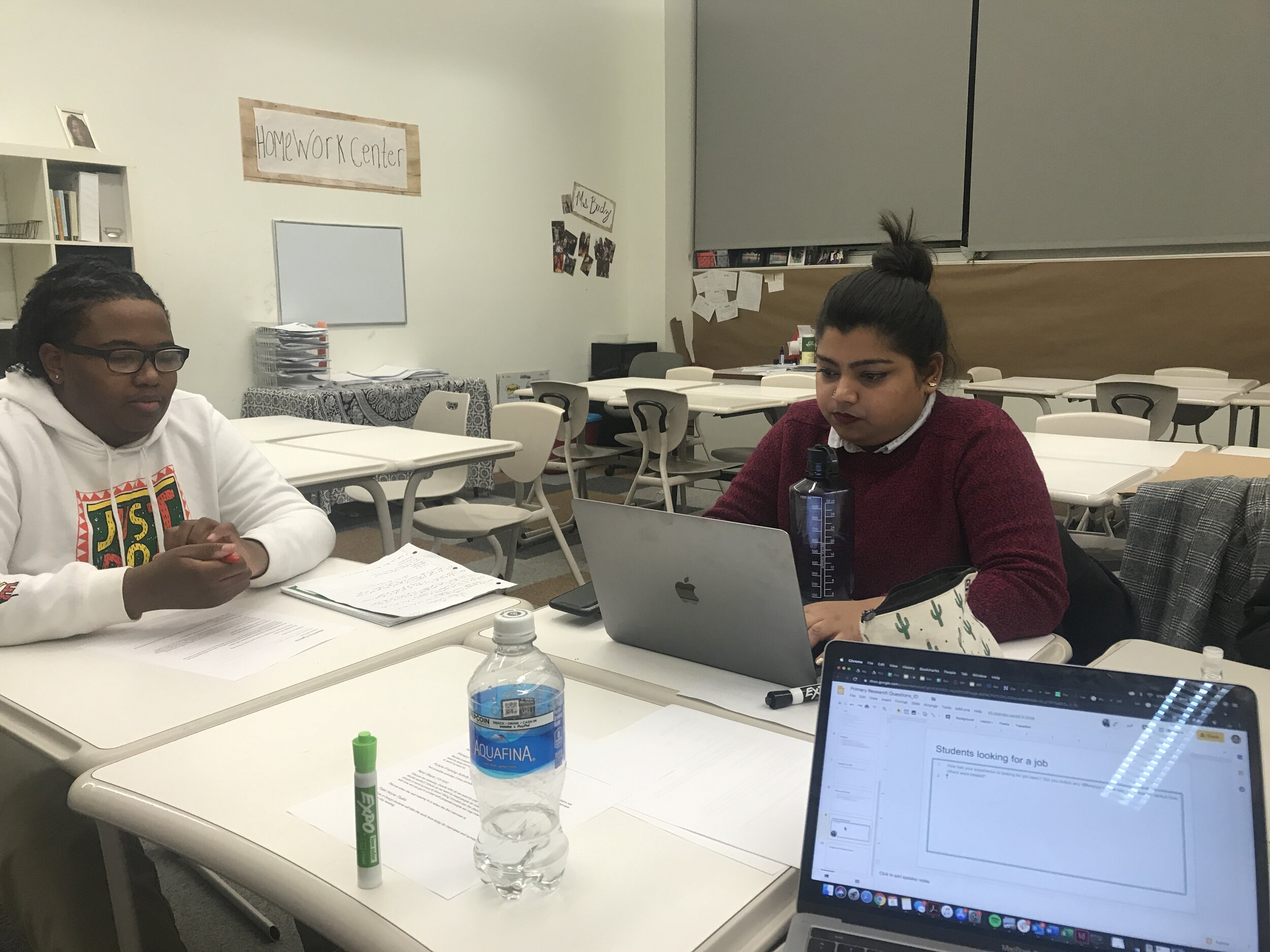My Brothers' Keeper
My Brother’s Keeper Action Plan
Duration: 14 weeks | Client: Thrive Chicago, Obama Foundation | Team: Andreya V., Brian S., , Justin B., Justin W., Robert G., Shuyi L., Tommie C., Yuting M., Xiaoqiao T.
Tags: Participatory Design, Design research, Design for Social Impact, Research Photography
“When designers discuss communities historically affected by racism, bias, and discrimination, we often use these words: impoverished, destitute, underprivileged, underrepresented, forgotten, and at-risk. This narrowing of our vocabulary results from our having focused on the stereotypical issues regarding young men of color that routinely appear in newspaper headlines or the evening news. This skews our understanding of these communities, as we accept a narrative of inevitable brokenness and tragedy. This, however, is not the narrative that these young men tell about themselves. That narrative must come forward to guide the change that we know to be necessary. This is why the work of My Brother’s Keeper Alliance, supported by social impact design, is so meaningful and so necessary.” - Tommie Collins
About the project
Approach
In February 2014, President Obama launched My Brother’s Keeper (MBK), a national effort dedicated to creating opportunities for all boys and young men of color. Within the Obama Foundation, MBK Alliance focuses on building safe and supportive communities for boys and young men of color where they feel valued and have clear pathways to opportunity.
On May 10, 2019, President Barack Obama’s legacy program to address opportunity gaps facing boys and young men of color nationwide launched its first action plan to impact youth in Chicago. Spearheaded by the nonprofit Thrive Chicago, a 10-point roadmap brought together private and public groups to address in new and innovative ways issues such as mentoring, social and emotional learning, education and employment.
Thrive Chicago later approached Christopher Rudd, faculty member at the Institute of Design and founder of ChiByDesign, to create the second iteration of an action plan using a participatory Design approach.
Our class set about co-designing a set of action principles to generate positive life outcomes for boys and young men of color in the city. The crux of the project involved our recruitment of high school-aged young men from Chicago to join our teams, get a crash course in design, and guide the work with their voices, talents, and points of view.
This project was done in collaboration with collaborators from the Institute of Design along with local schools, businesses, and organizations to focus upon education, employment, and health & wellness. Navigating the project through the lens of young men of color, we gleaned a deep understanding of the issues at hand, built strong rapport and relationships with our respective teams, and conducted a co-collaboration process that would generate action principles to meet their needs.
What is co-design?
Co-design, or participatory design, is considered – to be both a process and a strategy – which brings end-users and customers to design (and, one could argue, development) process. Participatory Design is not the same thing as empathic design. As opposed to empathic design, in which researchers and developers move into the world of end-users, participatory design can be seen as relocating end-users into the world of research and development. It was ubiquitous (and still is in many aspects!) to include users and customers at the beginning of the design process (pre- and market research, ideation phase) and later in the process (usability testing, design audits, and evaluation). Regardless of the naming convention, the general idea is the same – brining in real-world users as key stakeholders and actors in your design (and development) process. No just at the start or the end of the project – rather – during the entire project design phase. The concept here is the user involvement in design projects and design teams.
Degrees of participation across User Centered Design, Co-Design and Community Driven Design
process
OUTCOME
View the action report here















